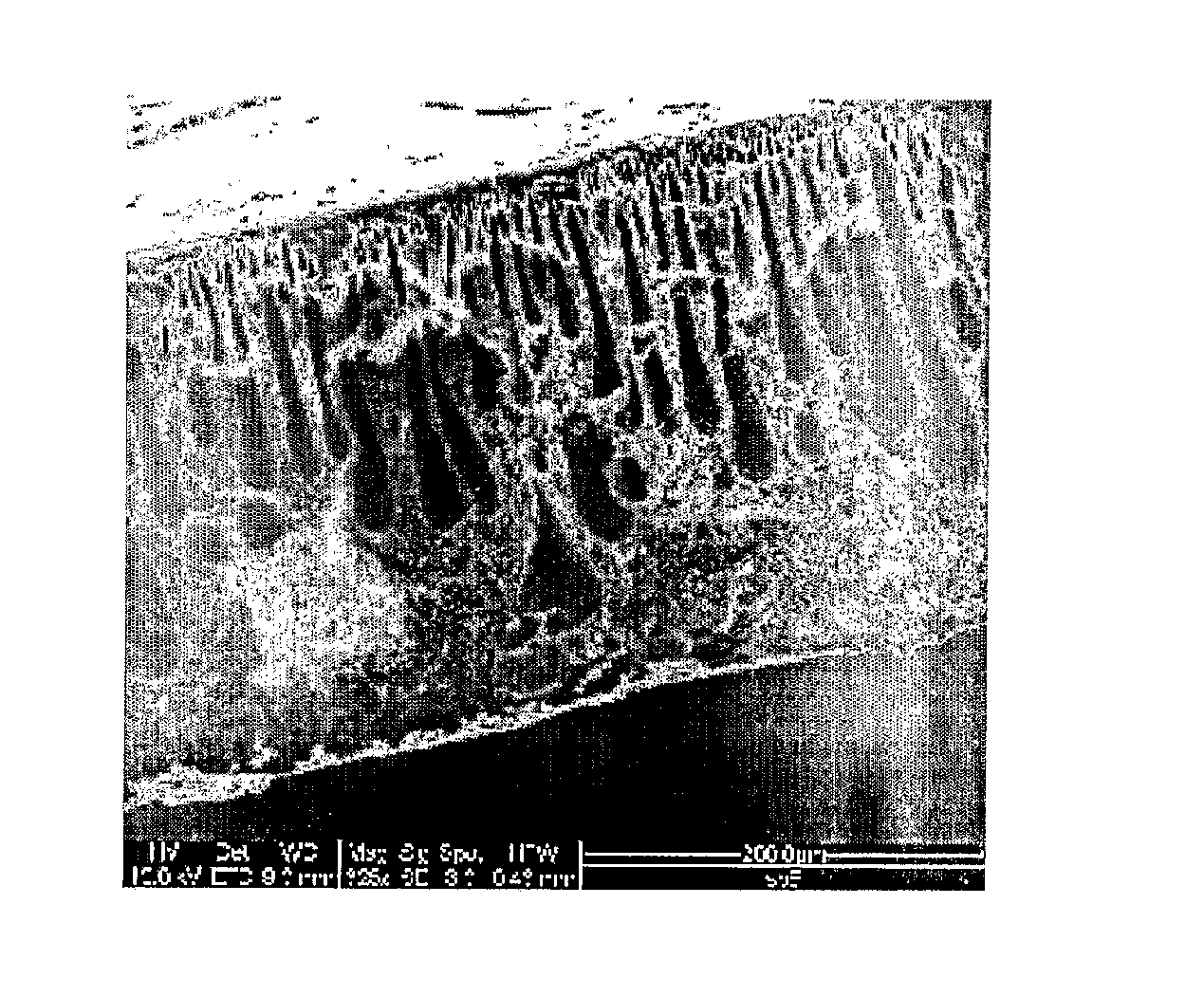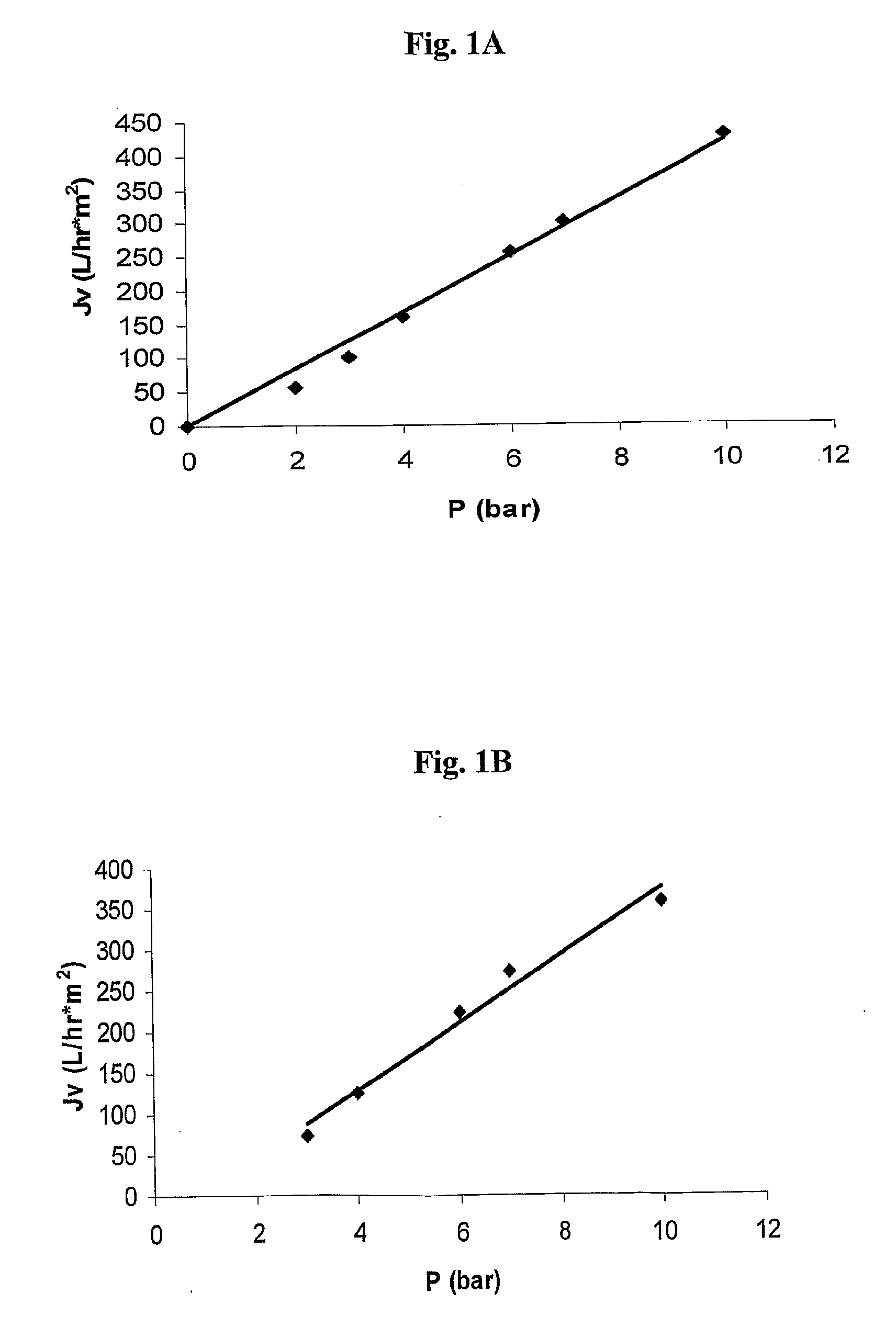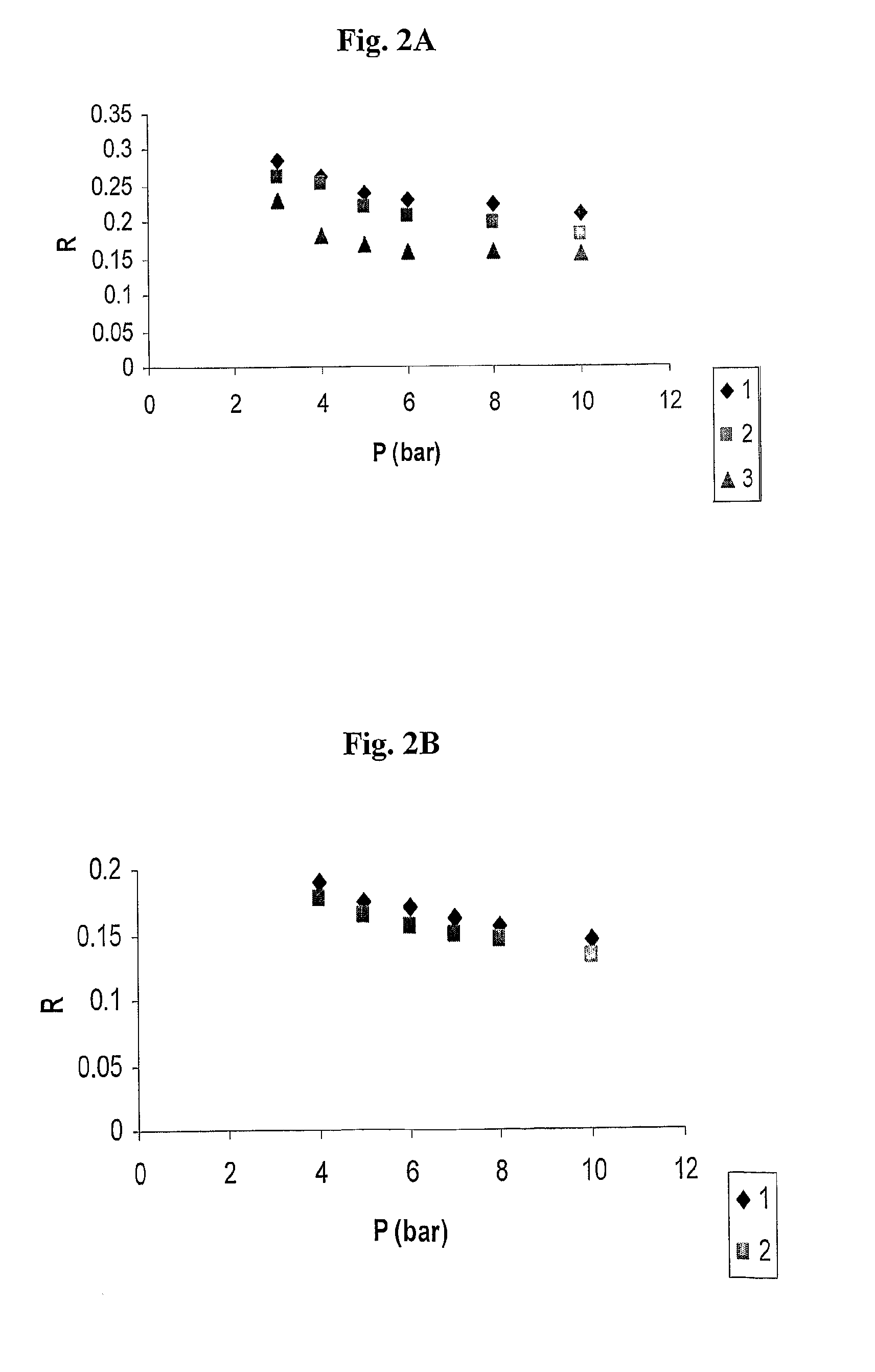Polysulfone polymers and membranes for reverse osmosis, nanofiltration and ultrafiltration
a polysulfone polymer and reverse osmosis technology, applied in the direction of semi-permeable membranes, filtration separation, pharmaceutical non-active ingredients, etc., can solve the problems of inadequate water sources, high energy costs, and high cost of membranes
- Summary
- Abstract
- Description
- Claims
- Application Information
AI Technical Summary
Benefits of technology
Problems solved by technology
Method used
Image
Examples
example 1
Preparation of Polyfluorosulfone-Polymer 2
[0125]
[0126]Into a 50 ml Schlenk containing a reflux condenser and a magnetic stirrer 1.824 g (12 mmol) of cesium fluoride were placed, and the salt was dried by heating the flask with a heating gun to 70° C. under a thin stream of nitrogen. To the flask was added 1.008 g (3 mmol) of 2,2-bis(4-hydroxyphenyl)-1,1,1-3,3,3-hexafluoro-propane and 0.762 g (3 mmol) of bis(4-fluorophenyl) sulfone, and 7 ml of NMP under nitrogen, and the reactants were dissolved with stirring at room temperature. The mixture was then heated with stirring in oil bath kept at 160° C. for 3 h under nitrogen. The polymer was isolated by pouring the reaction mixture into water. The precipitated polymer was collected, washed with hot water and hot methanol, and dried at 50° C. under vacuum. The final product obtained, Polymer 2, was a white solid (1.6 g, yield 97%) and had the following characteristics:
[0127]1H NMR (500 MHz, CDCl3) δ: 7.89 (d, 3J=9 Hz, 4H, H4), 7.38 (d, 3...
example 2
Preparation of Hydroquinone Based Polysulfone-Polymer 3
[0130]
[0131]Into a 50 ml Schlenk containing a reflux condenser and a magnetic stirrer 1.824 g (12 mmol) of cesium fluoride were placed, and the salt was dried by heating the flask with a heating gun to 70° C. under a thin stream of nitrogen. To the flask was added 0.33 g (3 mmol) of hydroquinone and 0.762 g (3 mmol) of bis(4-fluoro-phenyl) sulfone, and 7 ml of NMP under nitrogen, and the reactants were dissolved with stirring at room temperature. The mixture was then heated with stirring in oil bath kept at 160° C. for 3 h under nitrogen. The polymer was isolated by pouring the reaction mixture into water. The precipitated polymer was collected, washed with hot water and hot methanol, and dried at 50° C. under vacuum. The final product, Polymer 3, obtained was a white solid (1.9 g, yield 98%) and had the following characteristics:
[0132]1H NMR (300 MHz, C2Cl4D2) δ: 7.81 (d, 3J=7.72 Hz, 4H, H3), 7.03 (s, 4H, H1), 6.99 (d, 3J=7.72 ...
example 3
Preparation of Polysulfone Carboxylated-Polymer 4
[0135]
[0136]The dried polysulfone of Formula 1 [see the background of the invention] was placed into a 100 ml three necked Schlenk equipped with a dropping funnel, a thermometer, N2 inlet and a magnetic stirrer. 2 g (0.0045 mol) polysulfone 1 was dissolved in THF anhydrous (75 ml) and the temperature of the solution was reduced to −50° C. n-Butyl lithium (2.5 mol equiv., 0.0112 mol, 7.03 ml of 1.6 M in hexane) diluted with THF (10 ml) was added dropwise over 12 minutes, during which time mixture turned a red-brown colour. The polymer was quenched after 30 minutes by the slow addition (10 g) of CO2(s) during 30 min, and then warmed slowly to room temperature. The THF was evaporated on Schlenk line to produce the white slurry. The polymer was precipitated into dilute aqueous HCl (10%) solution, washed with distilled water and finally dried at 50° C. in vacuum oven to obtain Polymer 4 as a white solid (2 g, yield 98%), with the following...
PUM
| Property | Measurement | Unit |
|---|---|---|
| thickness | aaaaa | aaaaa |
| thickness | aaaaa | aaaaa |
| pore size | aaaaa | aaaaa |
Abstract
Description
Claims
Application Information
 Login to View More
Login to View More - R&D
- Intellectual Property
- Life Sciences
- Materials
- Tech Scout
- Unparalleled Data Quality
- Higher Quality Content
- 60% Fewer Hallucinations
Browse by: Latest US Patents, China's latest patents, Technical Efficacy Thesaurus, Application Domain, Technology Topic, Popular Technical Reports.
© 2025 PatSnap. All rights reserved.Legal|Privacy policy|Modern Slavery Act Transparency Statement|Sitemap|About US| Contact US: help@patsnap.com



